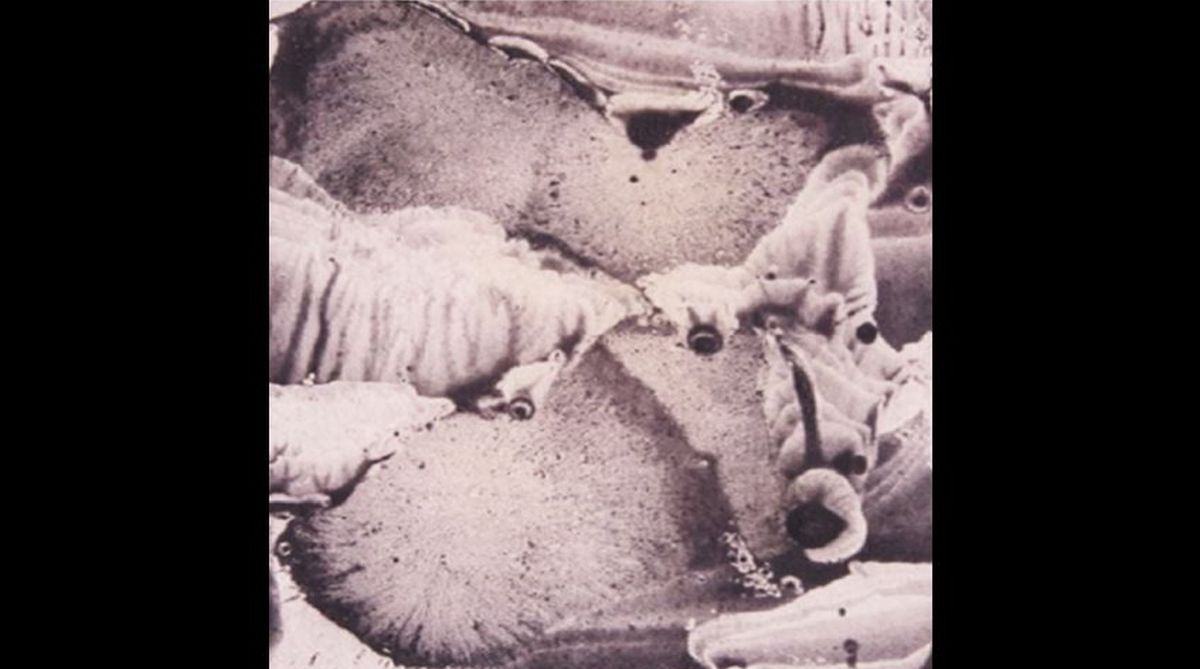Prez visits exhibition showcasing paintings by tribal artists
Commending the artwork of the artists, she said the eternal relationship between human beings and nature is reflected in their artwork.
Artist Akram Dost Baloch makes a dramatic departure from his earlier figurative works opting for an abstract route to self-exploration.

Eminent artist Akram Dost Baloch’s latest series of artworks at Karachi’s Koel Gallery, titled Collective Impulses seems to be a dramatic departure from his previous figurative paintings.
Hailing from Nushki, Balochistan, the artist’s practice was mainly focused on painting and wood-carving, featuring cultural motifs of the region he hails from and allowing him to explore the identities of its people. This stylised figurative work had its own distinct quality; and his characters, clad in turbans and Baloch dresses, became part of his distinct style. The current show, however, has a flavour completely different from the figurative explorations of cultural identity, and instead takes an abstract route to self-exploration.
These paintings, executed in diluted inks and water colours, are more introspective and visceral, perhaps exploring a different form of identity that is more innate and instinctual.
Advertisement
The visuals of these works are stunning, elusive and monotone, betraying spontaneity of style. There seem to be certain contradictions within the structure of each work, appearing at once calm and urgent, subdued and violent, simple and complex. The textures are akin to ink blots, not only visually but in function as well, enabling each individual to take away from it what their own psyches, exposures and experiences might dictate. In this way, the work becomes not only an exploration of the artist’s own depths but of a “collective impulse”, allowing the audience to reach within and discover something about themselves.
As a result, the 79 paintings on display appear to be similar, and at the same time each carries a unique visual experience. Many of them resemble abstract landscapes and rock formations, complete with turbulent skies, water bodies, cliffs and occasional foliage. These almost appear to be from alien worlds but the dry emptiness could well be inspired by the artist’s own region and its rocky and dusty landscape.
These images are suspended in time and self-contained. There is a certain silence in these works and it becomes difficult to imagine a world beyond the frame, despite the depths that the textures and shapes create. This, combined with an inherent darkness in some of these works, creates a rather sombre atmosphere. Untitled 66 and Untitled 67 introduce linear forms that attempt to rein in and cage the chaos bubbling throughout the works.
Other works appear a lot more abstract, almost like liquid clouds frozen in time. There is a certain movement in these works as the watery inks seem to almost create solid objects carved in ice. The subtlety and translucence of these works give them a vintage sensibility, and the unplanned appearance almost emulates sublime accidents, akin to botched black-and-white photographic prints.
As the mind attempts to make sense of the obvious chaos, loose ephemeral shapes emerge, and one sees creatures and objects and humanoids clad in robes, scenes of misery which quickly dissolve into the folds of fabric, each notion more fleeting than the last.
Whether this shift in the artist’s trajectory is permanent or merely a phase is yet to be seen. But, for sure, Baloch’s current body of work offers a refreshing new look into the mind of the artist. This could be an exciting opportunity to explore new avenues out of the comfort zones of an established practice and give the audience something new, exciting and pleasantly ambiguous to ponder.
Dawn/ANN
Advertisement